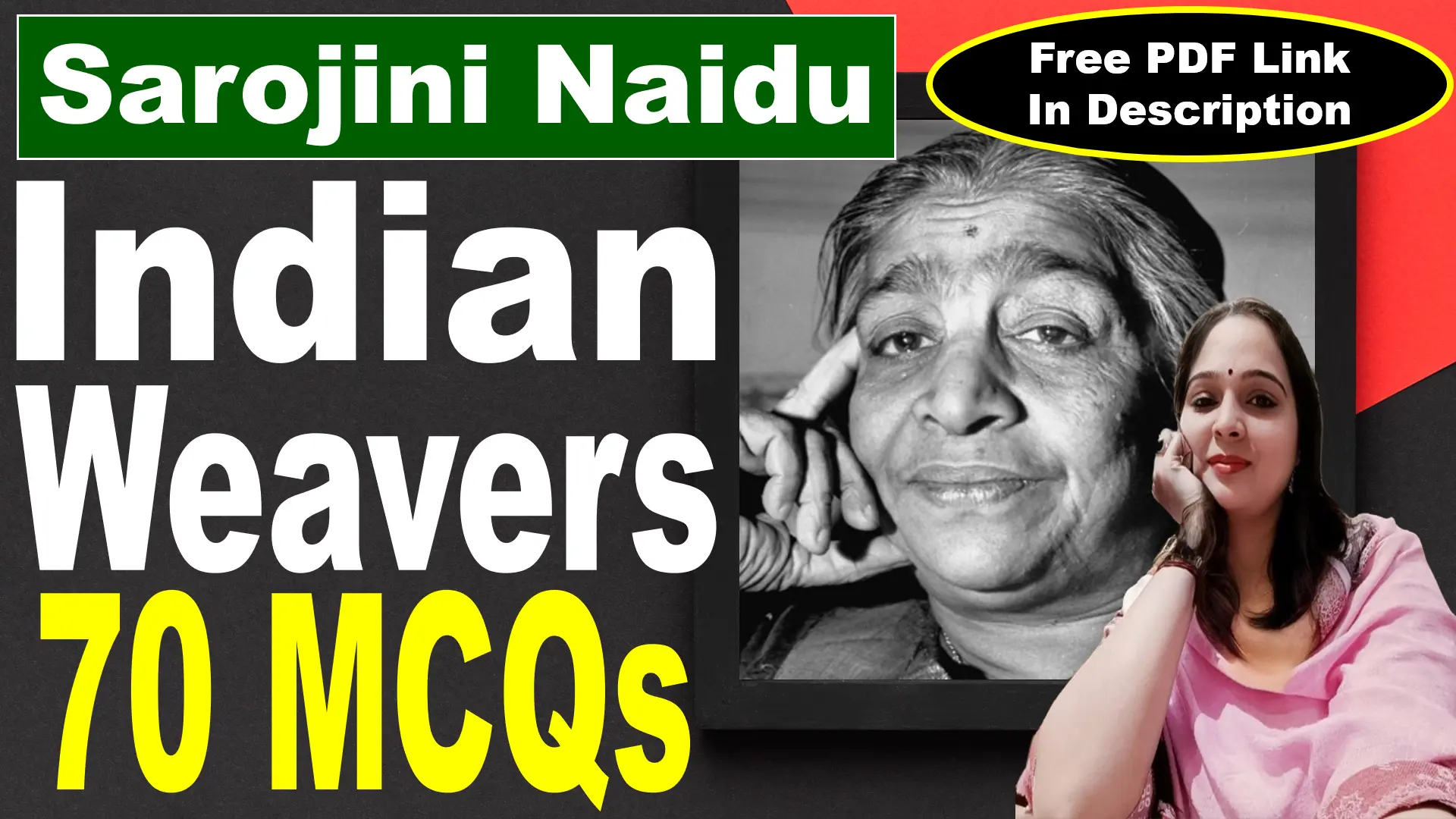
Space Time Continuum Poem Questions and Answers
Very Short Answer Questions
Who is the author of the poem?
Vinayak Krishna Gokak.
What is the title of the poem?
Space-Time Continuum.
What does Siva’s dance symbolize?
The cycles of creation, preservation, and destruction in the universe.
What is Parvati doing in the poem?
Watching Siva’s cosmic dance.
What does Parvati feel as she watches the dance?
She feels herself aging and the fleeting nature of time.
What does the “sun-moon dance” represent?
The balance of opposites, like light and dark.
What do “thunder and lightning” symbolize in the poem?
The power and intensity of Siva’s cosmic dance.
What happens when Siva sees Parvati with his third eye?
He perceives her as his eternal beloved.
What is the significance of the “forehead eye”?
It symbolizes divine insight and deeper perception.
What realization does Parvati have?
She sees the dancer (Siva) beyond the dance, understanding his eternal essence.
What does Ardhanarishwara symbolize?
The unity of masculine and feminine energies and cosmic balance.
What does the phrase “illusion of stability” refer to?
The false perception of permanence in a constantly changing universe.
What is being “fashioned and refashioned every successive second”?
The fragments of reality, representing the dynamic nature of creation.
What is the tone of the poem?
Philosophical and meditative.
What literary device is used in “thunder and lightning in the sky”?
Imagery.
What is the central theme of the poem?
The interplay of cosmic cycles, time, and eternal unity.
What does the “eye of her soul” represent?
Spiritual awakening and deeper understanding.
What kind of verse is the poem written in?
Free verse.
What does the poem suggest about time?
Time is transient and relative, part of the larger cosmic process.
How does the poem connect mythology and science?
By blending Hindu mythology with the concept of the space-time continuum to explore universal truths.
Short Answer Questions
What is the central theme of the poem?
The central theme is the interconnectedness of cosmic forces, time, and spiritual unity. Siva’s dance represents the eternal cycles of creation, preservation, and destruction, while Parvati’s realization highlights the transcendence of time and the union of opposites. The poem explores how fleeting realities conceal eternal truths.
How does the poem depict the relationship between Siva and Parvati?
The poem portrays Siva and Parvati as eternal lovers whose bond transcends time and individuality. Parvati initially focuses on the overwhelming dance but later recognizes Siva as her eternal consort. Their unity as Ardhanarishwara symbolizes the divine balance of masculine and feminine energies.
What does the “sun-moon dance” symbolize?
The “sun-moon dance” symbolizes duality and balance in the universe, such as light and dark, day and night, and creation and destruction. It reflects the harmonious interplay of opposites that sustain cosmic equilibrium, central to Siva’s role as the cosmic dancer.
How does Parvati’s perception change in the poem?
Initially, Parvati is entranced by the dynamic and chaotic rhythms of Siva’s dance, feeling the fleeting passage of time. However, as she observes with the “eye of her soul,” she shifts her focus from the transient dance to the eternal dancer, realizing Siva’s divine and timeless essence.
What role does Siva’s third eye play in the poem?
Siva’s third eye symbolizes divine insight and the ability to see beyond the physical and temporal. Through this eye, Siva perceives Parvati not as a fleeting presence but as his eternal consort, reaffirming their timeless connection and cosmic unity.
How does the poem portray the nature of time?
The poem portrays time as relative and transient, part of the ever-changing cycles of the universe. Siva’s dance and Parvati’s aging symbolize how time flows differently depending on perception, while the realization of unity reflects a transcendence of time’s illusions.
What is the significance of the phrase “illusion of stability”?
The phrase “illusion of stability” suggests that what appears constant or unchanging is actually in flux. The revolving Earth and dynamic processes of creation and destruction are examples of this impermanence, which the poem contrasts with eternal truths like love and cosmic unity.
What does the transformation into Ardhanarishwara symbolize?
The transformation into Ardhanarishwara symbolizes the merging of opposites—masculine and feminine energies, motion and stillness, creation and destruction. It represents the ultimate unity of dualities in the universe, embodying the balance that sustains cosmic harmony.
How does the poem connect mythology and science?
The poem blends Hindu mythology with the scientific concept of the space-time continuum. Siva’s dance represents cosmic cycles and the dynamic nature of existence, paralleling how space and time are interconnected and constantly evolving, as described in Einstein’s theories.
What message does the poem convey about reality?
The poem suggests that reality is ever-changing, and the stability we perceive is an illusion. True understanding comes from looking beyond surface appearances to grasp eternal truths, such as the unity of love and cosmic forces represented by Siva and Parvati’s bond.





